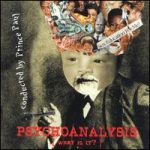Mental health articles
OF mental health care and mentally ill
Freudian psychoanalysis
Psychoanalysis itself employs four main techniques to uncover unconscious conflicts:
•free association
•transference
•use of leakages of information through parapraxes, body language and physiological cues
•dream interpretation These are followed by interpretative comment from the therapist and time spent working through the conflict.
he whole process takes place in a therapeutic environment which is carefully designed to encourage feelings of safety and confidentiality. A couch may be used to encourage the patient to relax, and the therapist will then sit unobtrusively behind the patient. Although Freud originally started by using hypnosis to access the patient’s unconscious, he found that it was unreliable in the sense that not all patients were hypnotisable, nor were they able to accept that reports given under hypnosis were accurate.
Even worse, they sometimes simply went to sleep! Therefore he substituted the technique of free association, which requires the patient to say whatever comes to mind, however trivial it seems, without censorship. The idea behind this was that when censorship is suspended there is more chance of unconscious material slipping past into consciousness. Another way to access the unconscious is to examine parapraxes or Freudian slips. According to the principle of psychic determinism, all of our behaviour has a cause, including accidents and slips of the tongue. For example, to refer to the ‘copulation explosion’ instead of the ‘population explosion’ could be regarded as a significant ‘prod’ from the id.
Other ways in which unconscious material could slip out, which modern analysts are also alert to, include physiological reactions such as blushing and non-verbal cues such as tone of voice and posture. Dream interpretation is one of the techniques that Freud is most famous for. He considered that dreams, because they occur during sleep when defences are lowered, are symbolic expressions of unconscious material; they therefore represent the ‘royal road to the unconscious’. The patient’s report of the dream was termed the ‘manifest content’. This is produced from unconscious material (or ‘latent content’) by unconscious distorting processes known collectively as ‘dreamwork’. These act to substitute disturbing images (e.g. a penis) with less disturbing symbols (e.g. a snake).
Symbols can also represent abstract ideas, such as the use of a crown to represent power. In order to interpret a dream, the analyst may examine it in conjunction with the patient’s free associations to their own dream content, reports about the previous day’s happenings (which are often worked into the dream), and in conjunction with other dreams that may form part of a series.
From Mental health articles, post Freudian psychoanalysis
Post Footer automatically generated by wp-posturl plugin for wordpress.
More from my site
Tags: Freudian, psychoanalysis







Leave a Reply